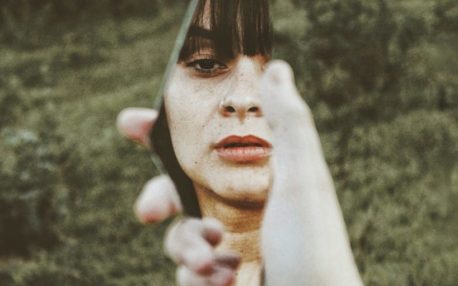Our DID Journey
“What is DID?

“It turns out it’s almost impossible to piece together a puzzle when you don’t have all the pieces. I knew something was wrong but couldn’t figure out what was wrong. Looking back, it makes sense because I only held part of the puzzle of our life. “
“What is having DID like?”
People who haven’t experienced fragmentation have trouble wrapping their heads around an almost incomprehensible experience and existence. How does one explain the experiences they thought were completely normal human experiences? It takes a lot of processing to begin to understand it yourself, let alone explain it to another human being. How does one explain the way the mind fragments to one whose mind is whole? How do you explain how the pieces exist almost like a community of individuals inside the headspace? I will do my best to pull back the curtain and describe my experience, our experiences, to help you better understand. For clarification, ‘I/me’ refers to the part writing, and ‘our/we’ refers to the collective of parts.
One of the most requested things I’ve been asked of late is, ‘What is your diagnosis story? How did you discover that you were a system?’
Well, let me do my best to briefly tell you the journey to the discovery of being a system and the eventual diagnosis of DID.
Parts or alters develop in response to childhood trauma as a way to cope with the enormity of what’s happening. As more trauma occurs, further splits in the brain will happen. However, due to the amnesia between parts, the awareness of these other parts often doesn’t occur until later in life. And this was the case for us.
If you’ve seen our Youtube story, you’ll know we experienced physical, sexual, religious and mental trauma. We lived with minimal outside social contact, being homeschooled and part of a religious group that determined we were the ‘chosen’ people and that any association with those outside the denomination was ‘worldly’.
We were, however, ironically allowed access to online chat rooms, and one of the people ended up being a DID system. I didn’t realise it then, but later I discovered that different parts of our system had been talking to this system online. I also realised that other parts were beginning to write in our journals, and the handwritings were quite obviously different.
I began to suspect that we might have Multiple Personality Disorder, as it was known back then. I worked up the courage to go to my mother about it, and with a shaking voice and hands, I said I suspected I might have Multiple Personality Disorder. She seemed to receive it well, and I felt relief that I had been heard. But the relief was temporary because after she talked to our father, he deemed that ‘DID is demon possession, and therefore we did not have it’. What I thought had been a wise decision ended up being one filled with shame and regret, and as a result, a part formed that held an incredibly strong denial. However, that denial protected our system going forward; it was safer than the shame of rejection. From there on, the beginnings of awareness were buried deep again, and we continued life as we knew it.
My world continued to spiral out of control, and I couldn’t quite piece together why. It turns out it’s almost impossible to piece together a puzzle when you don’t have all the pieces. I knew we’d had a different childhood, but as far as I knew, it was relatively normal. Sure, I had huge gaps in my memory, but I didn’t realise that wasn’t normal. I couldn’t understand why the internal conflict felt so strong and why my actions would seem so contradictory. I would go to work, attempt to study, and do all the everyday life things. Why would I wake up in the ICU, drink to the point of blacking out, overdosing, self-harming, ending up in some random person’s bed, selling my body, starving, binging, and purging? Why was this happening? I knew something was wrong but couldn’t figure out what was wrong. Looking back, it makes sense because I only held part of the puzzle of our life.
I chose to go to rehab because I knew I wouldn’t be alive for much longer if I didn’t. I had hope that whatever was wrong could be fixed, but I soon found myself running into another invisible wall. Therapy became this almost invisible wall that I felt I was repeatedly hitting my head against without understanding what was happening. I just wanted to do the work, but then whole sessions would happen that I had no memory of or entire sessions would be spent in silence. It was so confusing and frustrating for me because any progress seemed impossible. I kept questioning what was wrong with me that I couldn’t even do therapy properly. Looking back, I can now see it was a part that was trying desperately to protect us, and the only way it knew how to keep us safe was by being silent. Speaking out in the past hadn’t worked so well, so being silent seemed like the wisest thing to do. That part didn’t realise we were now safe in an adult world; it was stuck back there in trauma time.
Writing and drawing were the most significant breakthroughs in being able to help access the inner world that existed beyond the external silence. It bypassed the wall of silence and helped our therapist begin to understand us in ways that had been impossible before. It opened up a line of communication for me, for parts inside, to start to talk about their experience.
In the years that followed, the therapeutic models of IFS (Internal Family Systems) and trauma-informed therapy became a huge help. The entire premise of IFS is working with parts, and being able to start to do internal work was hugely helpful. Our internal system began to stabilise as parts were heard, listened to and honoured.
In 2021, we needed a list of diagnoses for some paperwork. In Australia, psychologists cannot diagnose, but clinical psychologists and psychiatrists can. At that point, we were seeing a psychologist, and she wrote up a report and referred us to a clinical psychologist. After several sessions, we walked out with a paper in hand, and one of the diagnoses was DID or Dissociative Identity Disorder. It was a surreal feeling. There was a mixture of responses inside. How do you describe a response that is actually many? Imagine a chorus, the voices of many, but singing their own songs. Some were relieved as if their existence and trauma had been validated on paper in black and white ink. Some still had denial – what if they’d gotten it wrong? Surely they’d gotten it wrong. And others sat in uncertainty, unsure of what it all meant. How our world evolved internally from there is another story I will choose to leave for another day.
We’ve always been quiet about our diagnosis of DID for various reasons, most originating from a place of fear. We hadn’t been involved in any online DID communities; however, in 2022, we became more active on TikTok. We discovered another DID system who was bravely and boldly sharing their experiences. Seeing how they courageously shared real and raw, and the kindness of others was one of the reasons we began to share our story. We’d always shared our story in the hopes that it would help others, and being on the receiving end encouraged us to share another piece of our life and share it forward.
It’s only been since the end of 2022 that we began to be open online. Initially, there was much fear, but the support helped us walk on. We have seen the number of people willing to learn, and we continue to use our Master’s in Counselling and our lived experience to help teach authentically. We’ve also seen the number of people who feel less alone when they see us talk, who can relate in one way or another. We try to create a safe space and community for those who want to learn and those who want to just ‘be’. We see the difference sharing our story makes, and the ongoing support helps us against the hate and judgment of those who don’t want to understand. Of course, there will always be those who want to see us fall, but those are not the people we are here for. We are here for those who want to be understood, want to understand, and want to be part of the safe space we aim to create.
